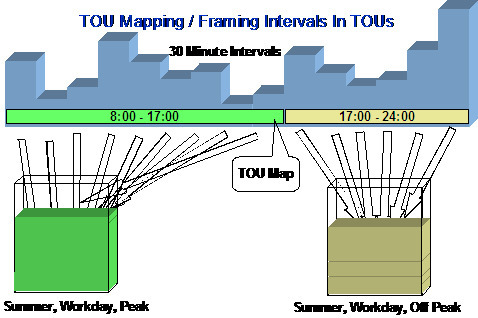Time of Use Mapping and Pricing
The following section describes the logic used by the system to map interval quantities to time of use codes using a TOU map, and subsequently apply prices to these mapped quantities.
At some point during billing, the system will take interval quantities linked to the service agreement and map them to time of use quantities based on a TOU Map.

For simple billing, this type of data manipulation is typically handled using an SQ rule. Keep in mind that SQ Rules are processed before applying the rate components and therefore they do not have knowledge of system breaks that may cause price proration.
Proration occurs when a given price covers a period smaller than the billing period AND the system does not have readings for the period covered by the price. When this occurs, the system will prorate the usage to apply the correct price. Refer to Effective Dates & Price Proration for more information about proration.
If you read carefully the price proration information, you'll see that if the service quantities are peak quantities, the quantities are not prorated but the charges are prorated. For other cases, the system prorates the service quantities.
When your interval quantities are peak quantities, the same should apply. The mapping should occur prior to price breaks, for example, using an SQ rule. Then, the TOU pricing rate components would apply prices to the mapped SQ quantities.
For non-peak interval quantities, readings exist for any price break situation. As a result, no service quantity proration is necessary. The mapping simply needs to occur after all price breaks are determined - at the rate component level.
